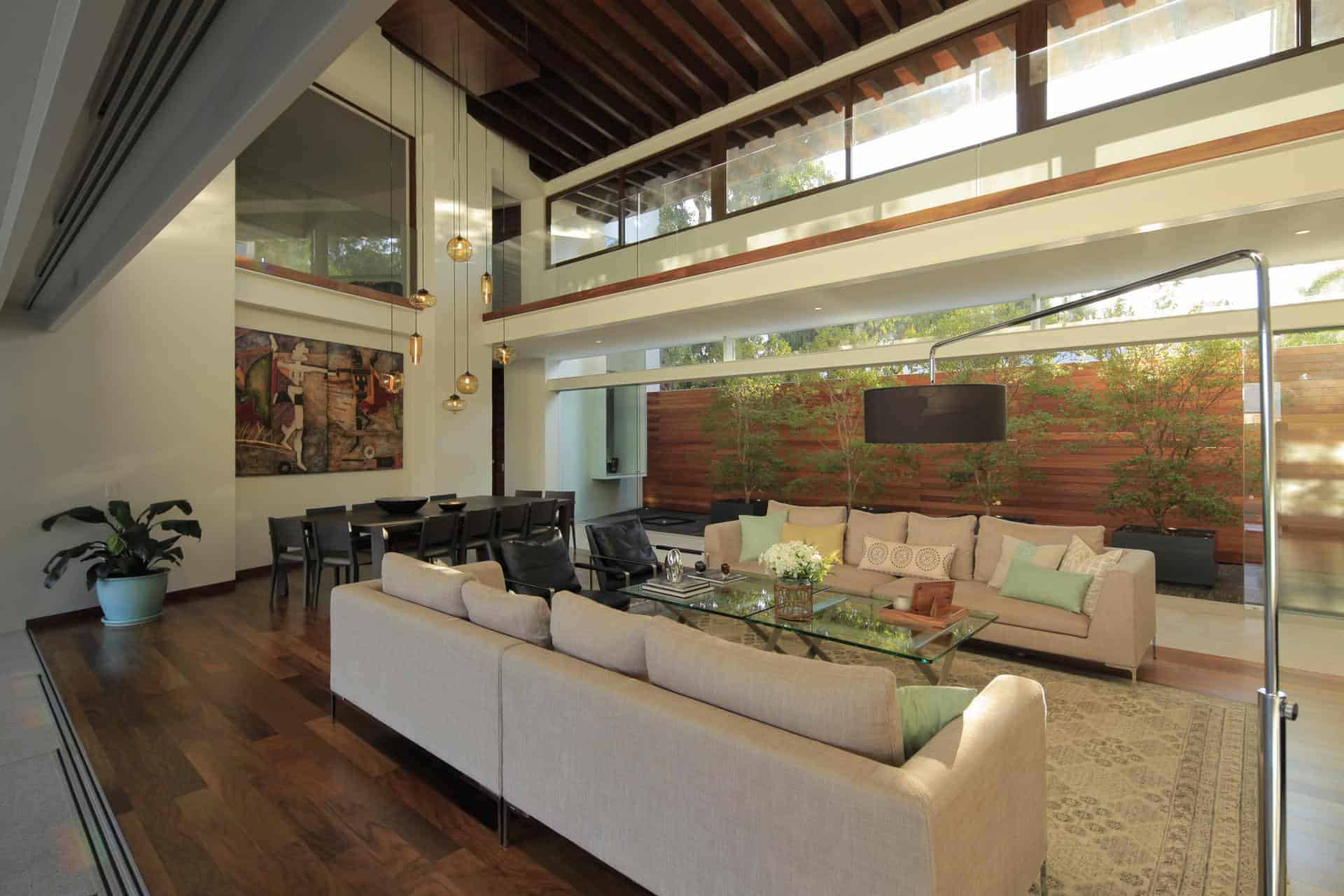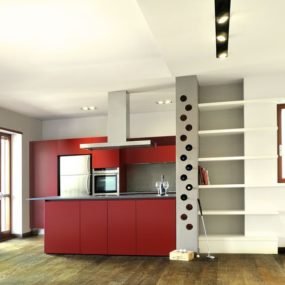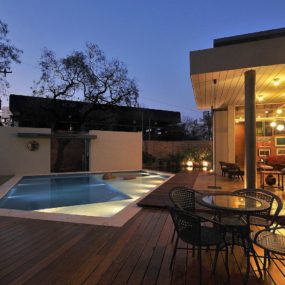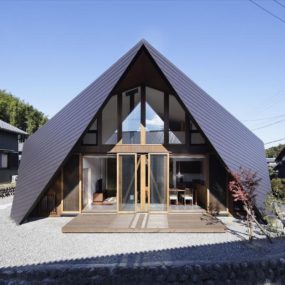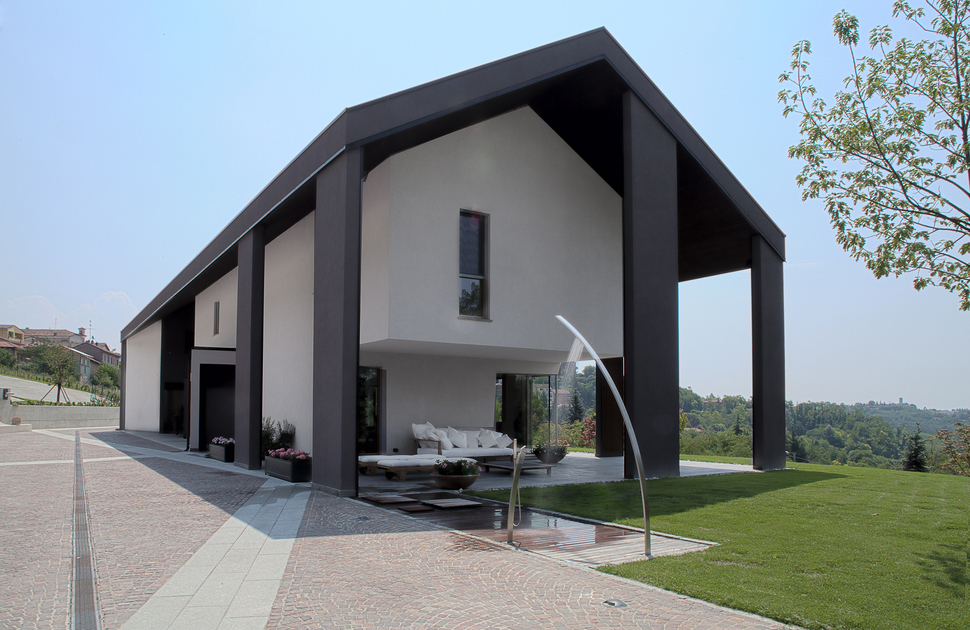
Located in Area Novara, Italy, Diego Bortolato Architetto was tasked by his clients to unify the residence with the rural buildings that surrounded it. To do so the architects chose to contain the main house, and a second service building under one continuous roof. The roof was also oriented to maximize solar gain during the winter while at the same time sheltering the home from the sun during the summer months. The large roof extends out past the building footprint to create double height covered decks. A third building, the garage, is detached.
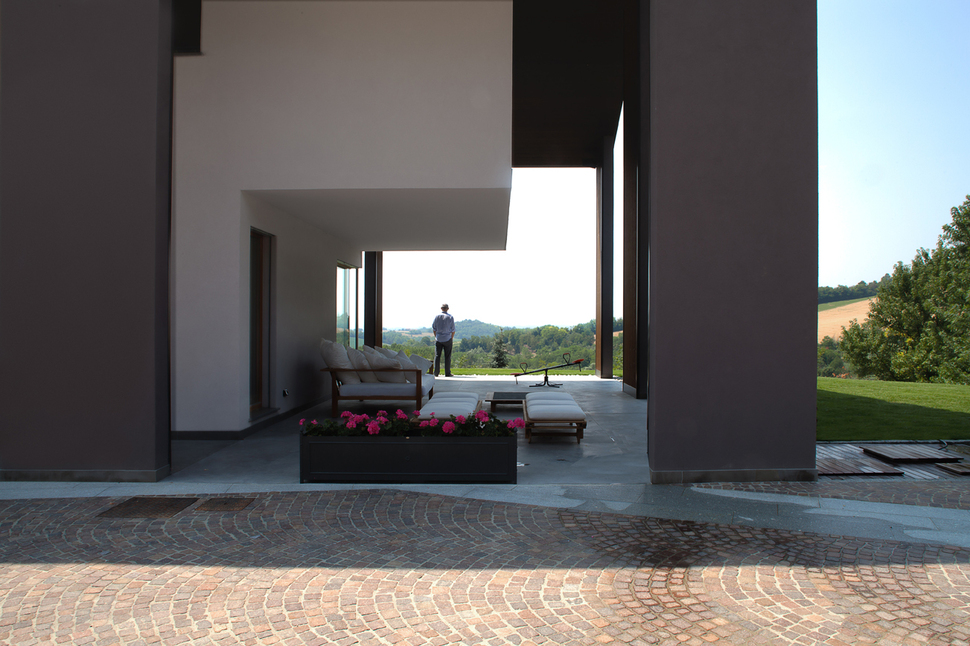
The 2nd floor of the building also extends beyond the walls of the lower volume, creating the perfect outdoor lounge area complete with view. This covered deck area consists of a staggered height ceiling. The first, more intimate height being created by the 2nd floor, and beyond the walls of the 2nd floor, the extended roofline creates the 2nd taller double height covering. The two levels are defined not just by their heights but also by their colors. The white more intimate area, and the black more voluminous area. The deck is further defined by the polished concrete in the outdoor living zone and the cobblestone bricks used in the attached area.
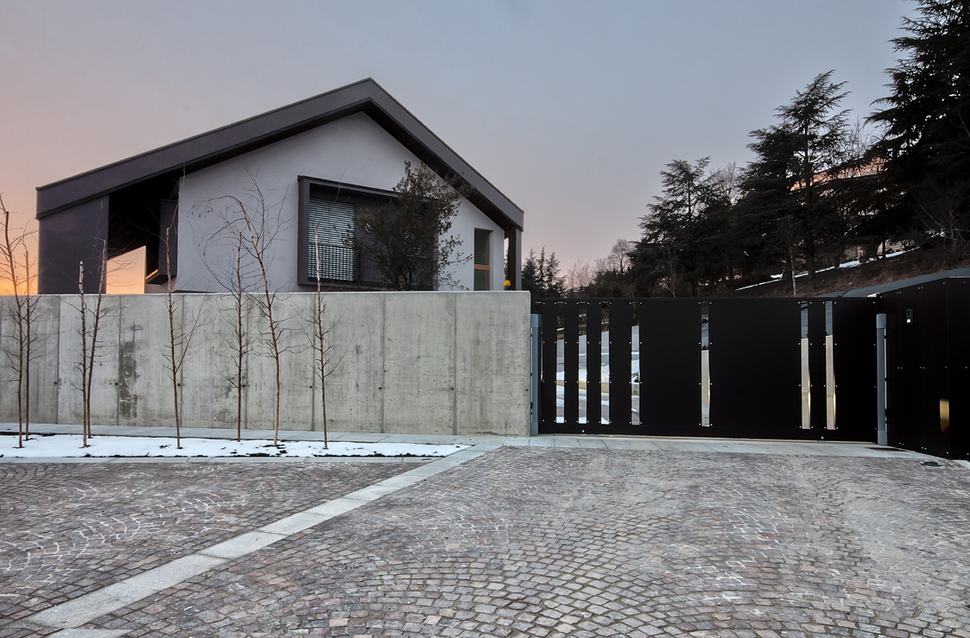
The cobblestones continue out to and on the driveway.
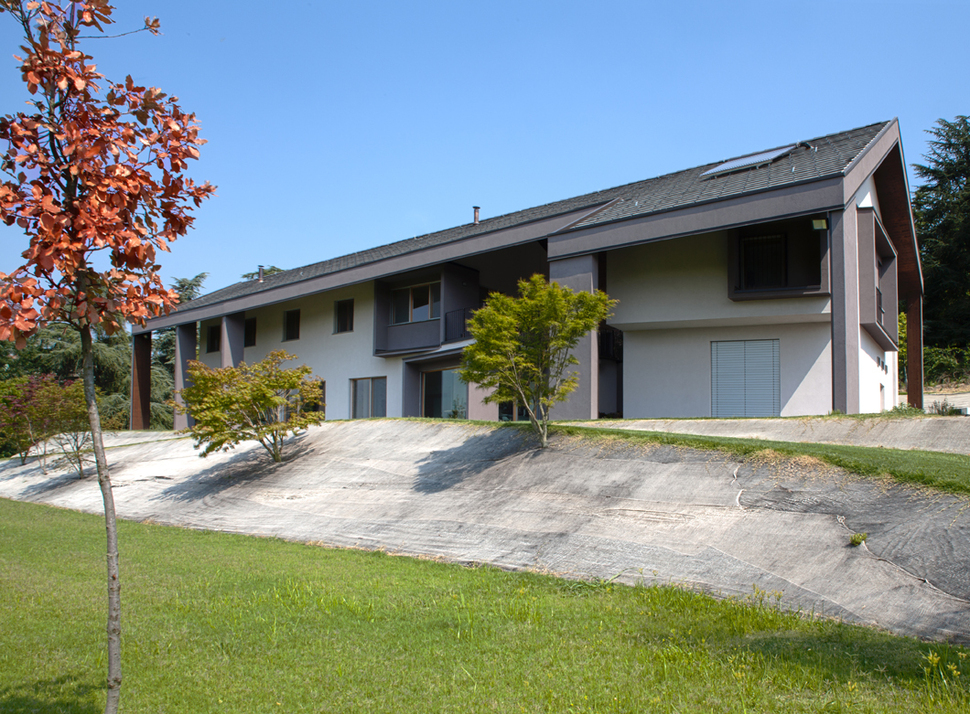
The back of the home is located just before a short drop off and the home is positioned to run with the drop rather then against it.
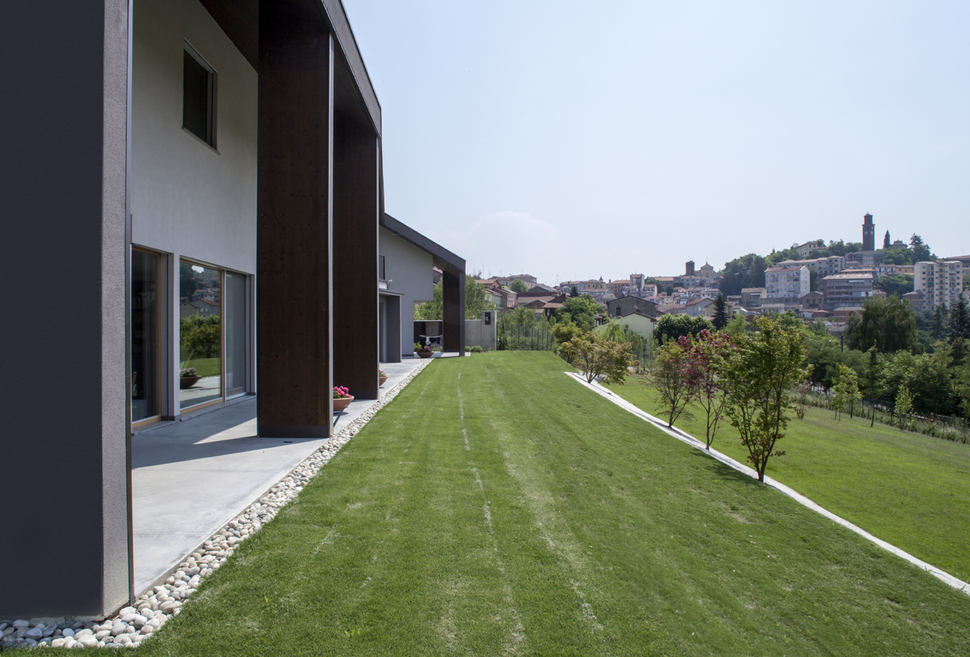
The location of the home is set just far enough back from the drop to allow for a comfortably sized grassy area for fun in the sun as well as a wide enough covered deck for shadier outdoor activities.

Between the two buildings and just outside of the kitchen, an outdoor eating area creates the perfect spot to enjoy the views.
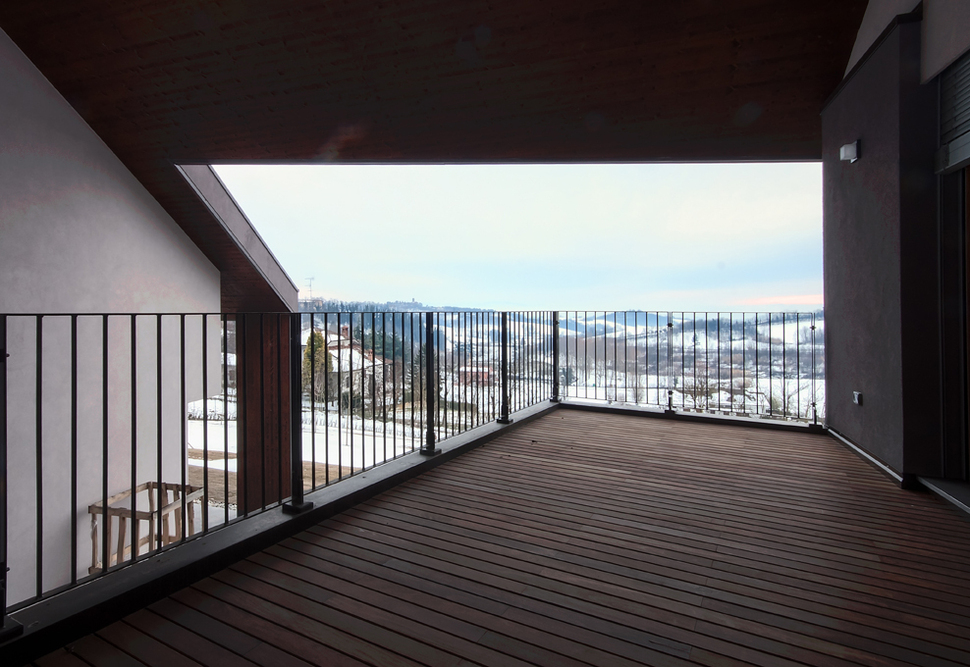
The views from the terrace above the outdoor dining area aren’t so bad either.
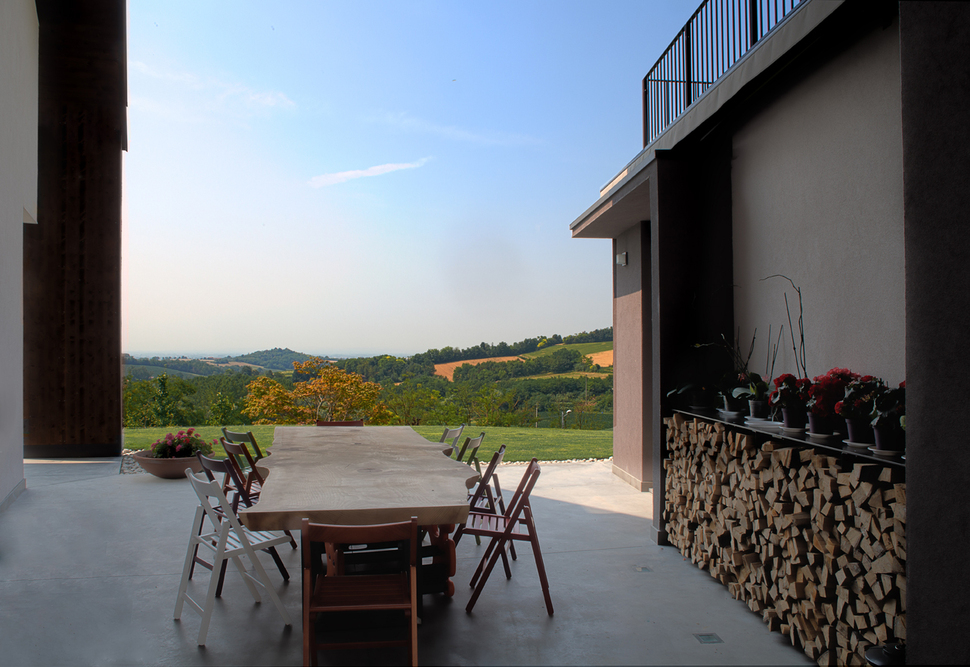
Below the terrace and tucked up against the building is a niche for winter firewood and to give it a bit of summer flare during the warmer season, a shelf filled with flowering plants creates an aromatic moment.
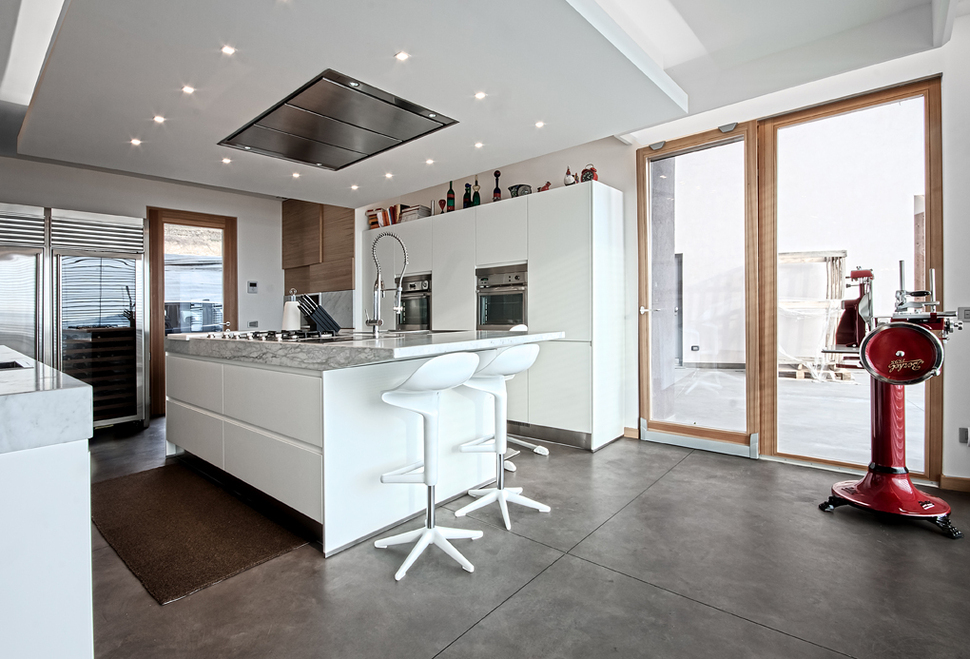
The niche of firewood and flowering plants backs up to a wall of full height cabinetry in the kitchen. Here, instead of running a bar down the length of the island, the architects instead chose to use both sides for prep and allocate only one end for bar seating.

By only positioning bar stools at the end of the island, the kitchen becomes the perfect place for more then one cook. With a huge fridge on one end, two sinks, plenty of counter space and storage galore, this is truly a gourmet kitchen.
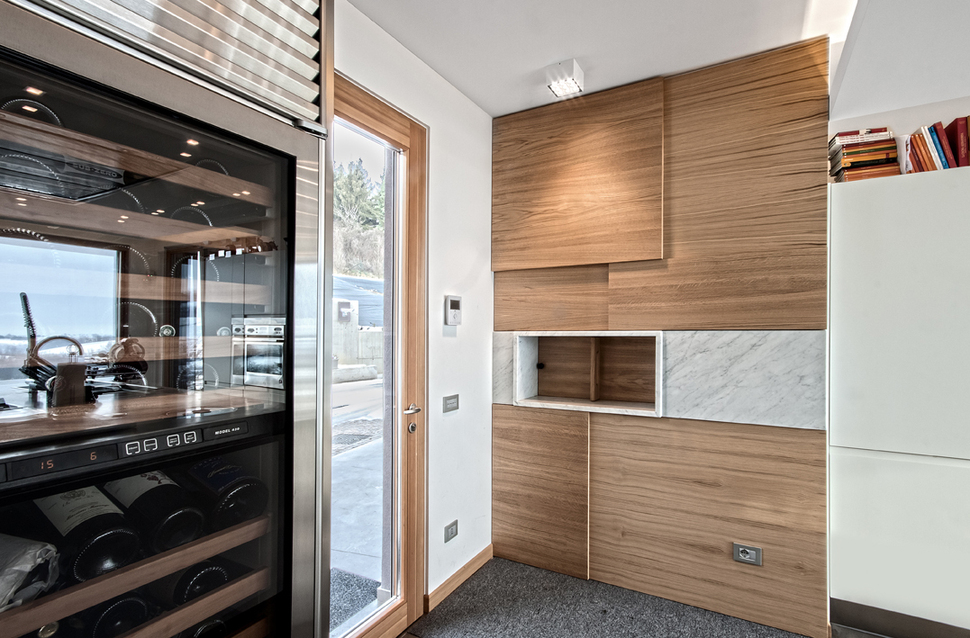
There is even a full height wine cooler beside the fridge and another door to the other side of the home.
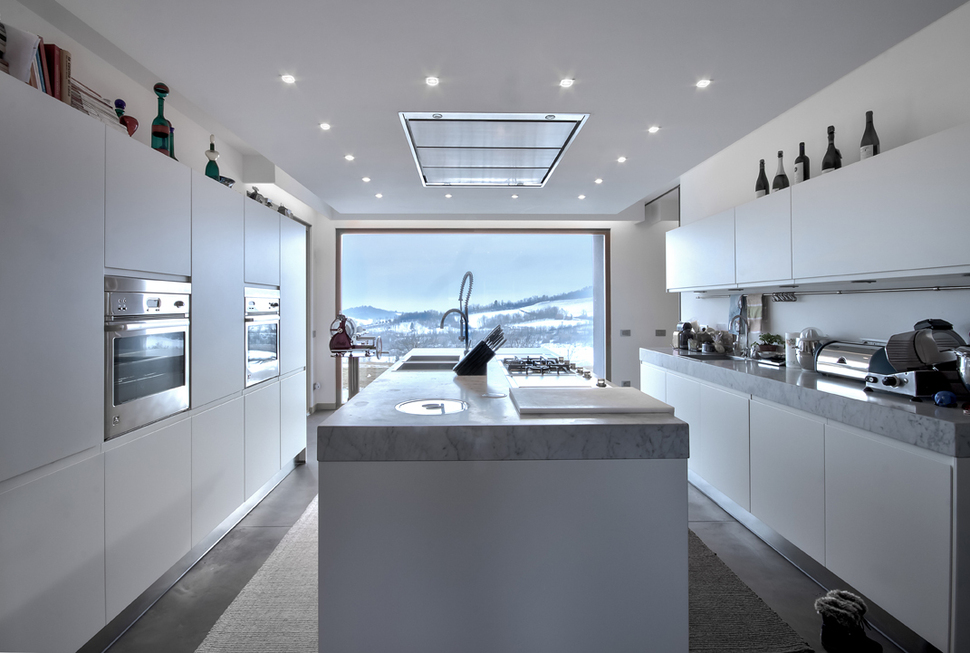
With two doors and a wall of window to enjoy the views, Diego Bortolato Architetto has thought of everything to make this a true chef’s delight and even those of us that don’t have any interest in cooking would be happy to hang out and keep the chefs company.
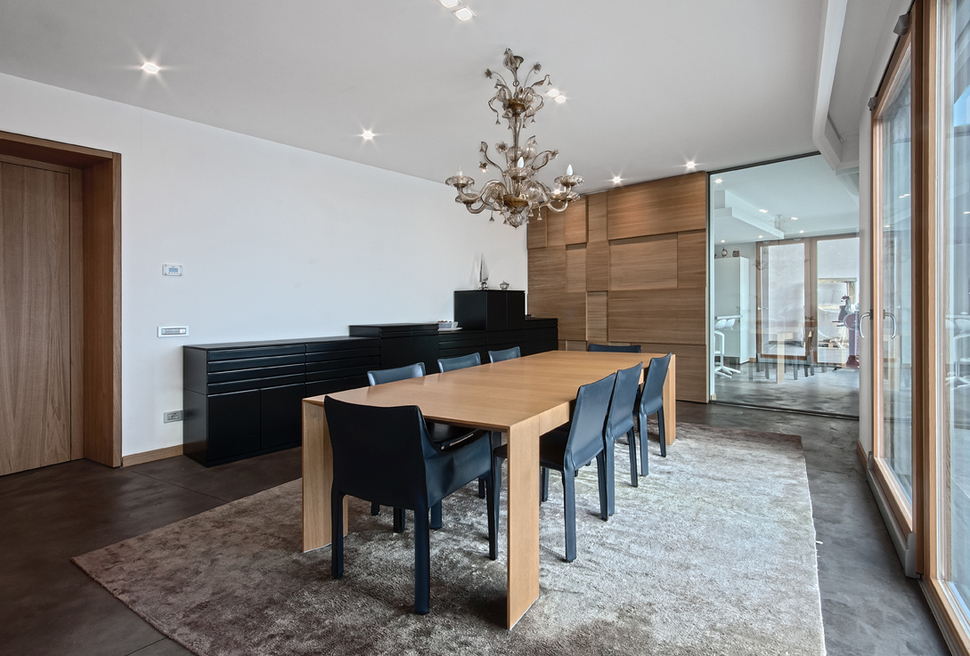
Just beyond the kitchen is the dining zone. Here the canvas of white is left behind in preference of a grey, black and natural wood scheme. The waxed concrete floors used throughout the lower volume of the home create the perfect backdrop for the bold black chairs and buffet. The addition of an ornate chandelier creates a sense of drama as it points majestically down to the clean lined table and as the light floods the space, the shadow lines on the relief panels of the kitchen wall become a geometric moment amongst the clean lines of this modernist space.
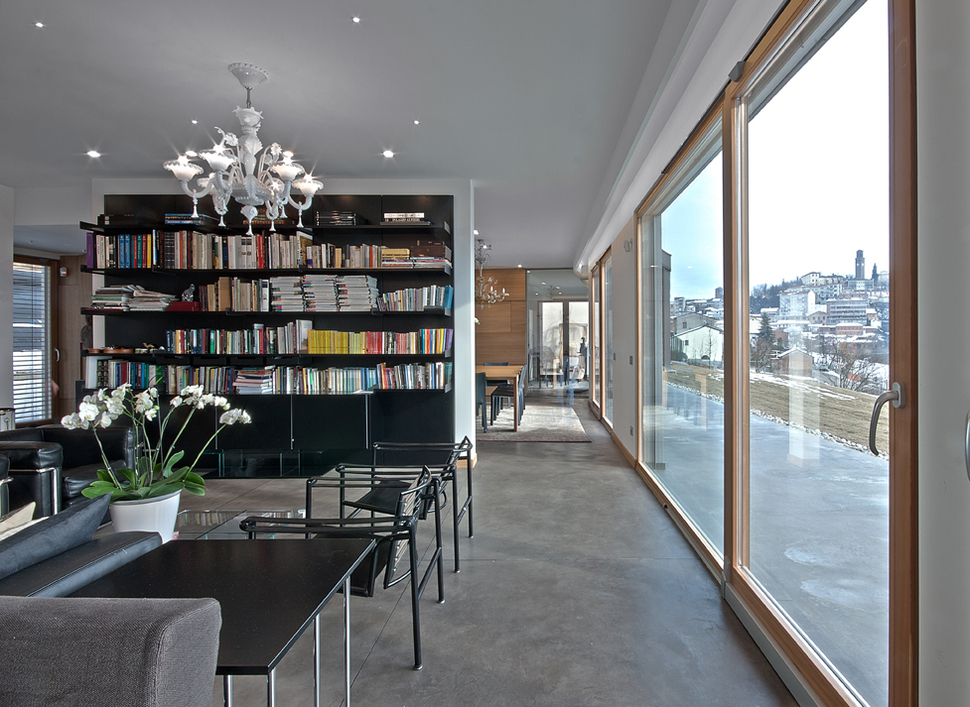
A floating wall divides the dining area from the living zones creating a mini library in the process. The black shelves of the library wall repeat the blacks of the dining and living chairs while the books themselves mirror the white of the more contemporary chandelier as does the flowering plant on the coffee table.
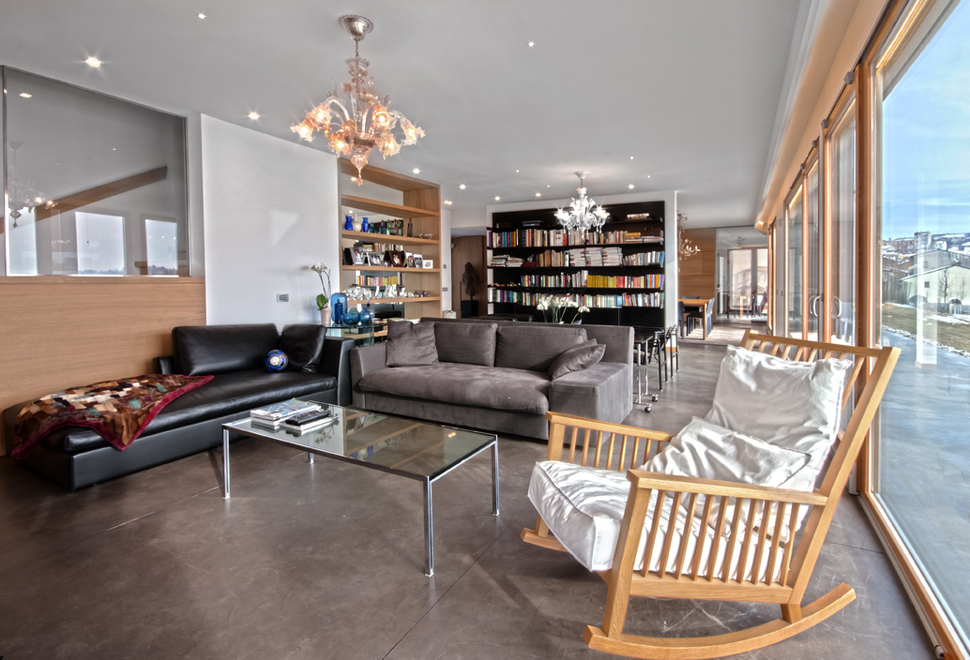
A second living zone is back to back with the first. Here, more casual seating surround a casual glass and chrome table and a third, simpler chandelier creates a center point to the arrangement.
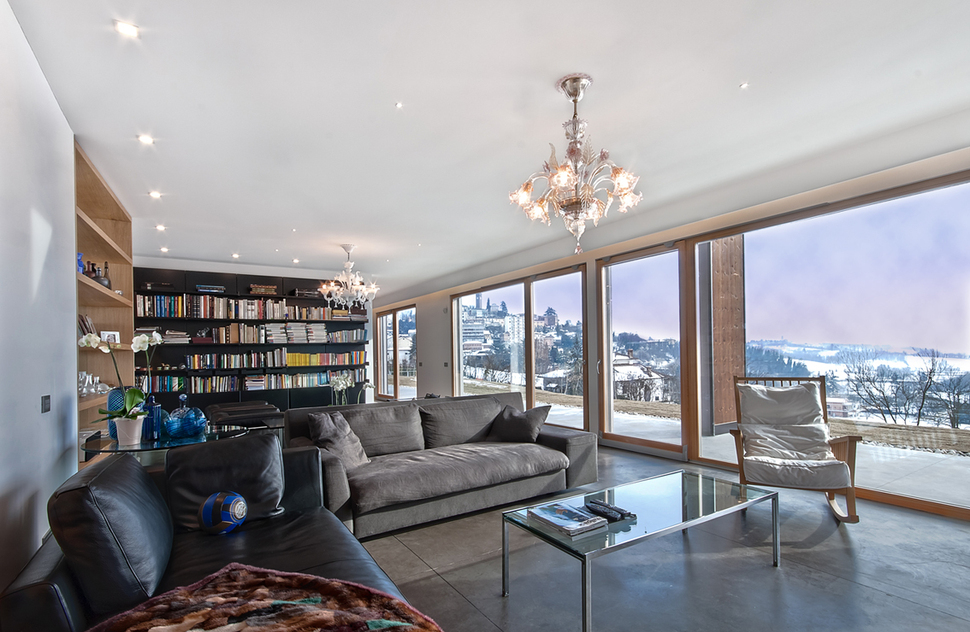
The living and dining zones are positioned to take full advantage of the views beyond. The natural wood casings to the double glazed windows are a soft touch next to the waxed concrete flooring and black and white color scheme and the chandeliers are an ornate, contrasting moment in an otherwise modern scheme.
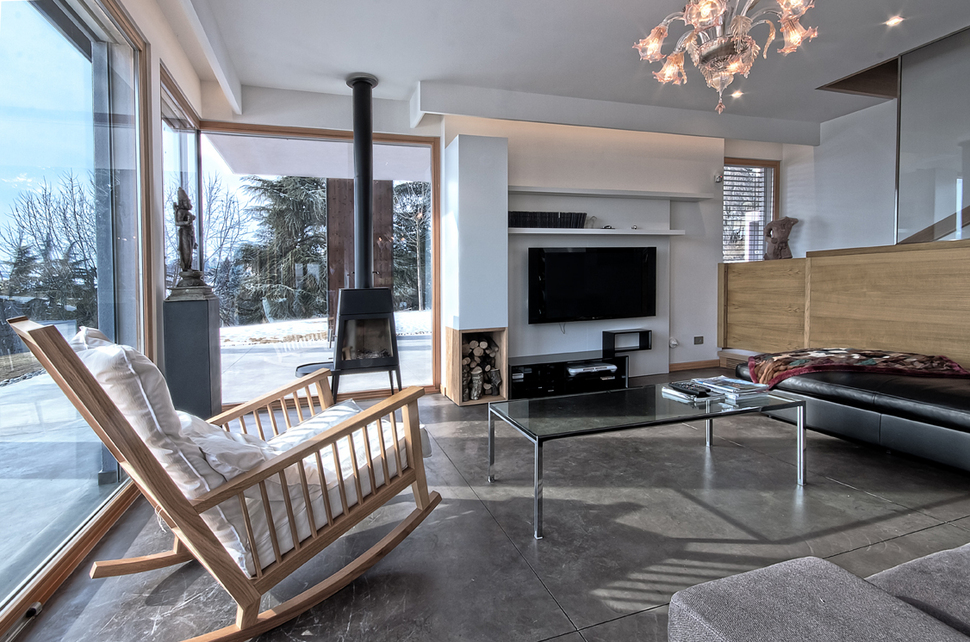
The second living area is the media section of the home and it comes complete with a freestanding wood-burning fireplace. The media wall is a contemporary layout of asymmetrical shelving and down lit light valance. When the fire is not on, the home stays comfy cozy via the heating and cooling radiant floors, the air humidity control system and mechanical ventilation.

Just outside the media area is the covered outdoor lounge area.

By framing the TV with shelving, the flat screen becomes part of the overall black and white decor. To emphasize the artistic value of the wall, a sculpture of a human torso is featured through the open gate next to it.
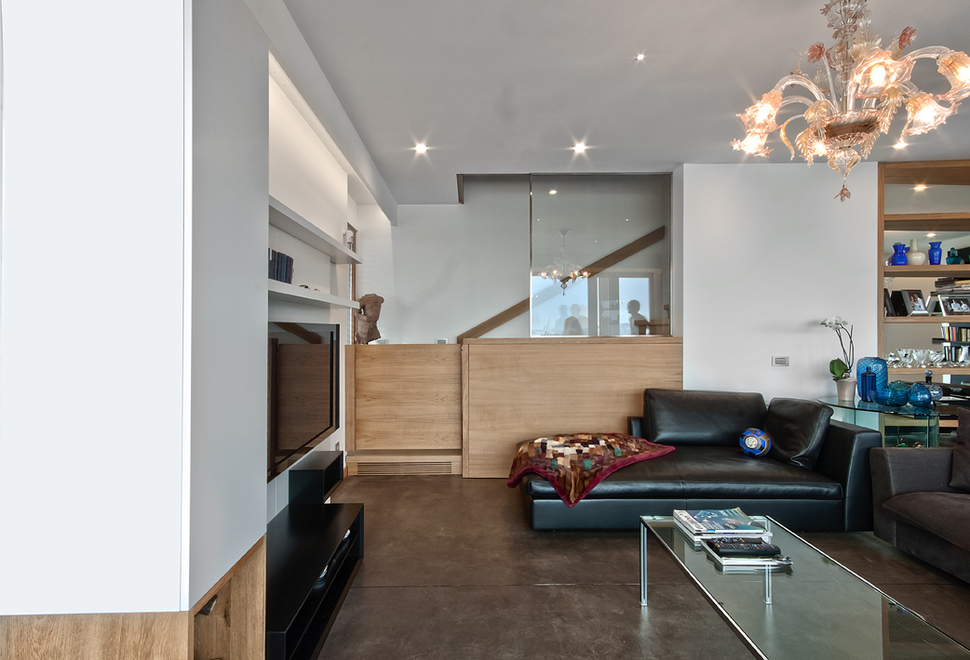
The gate leads to the stairwell and when closed becomes the continuation of the pony wall behind the leather chaise. A tempered glass panel that extends from the pony wall up to the ceiling, keeps the view lines while at the same time creating a sound barrier for the upper volume.

The stairwell starts out as a closed riser and tread system, but just past the glass partition, it converts to an open riser format, allowing additional light to enter the narrow space. At the same point of riser transition, the tapered handrail stops and is replaced by a solid wood panel with uplighting at the handrail level. As well as bringing in additional light, this change of pattern creates a visual division that creates two smaller zones of stairs, thereby making the area feel smaller and wider.
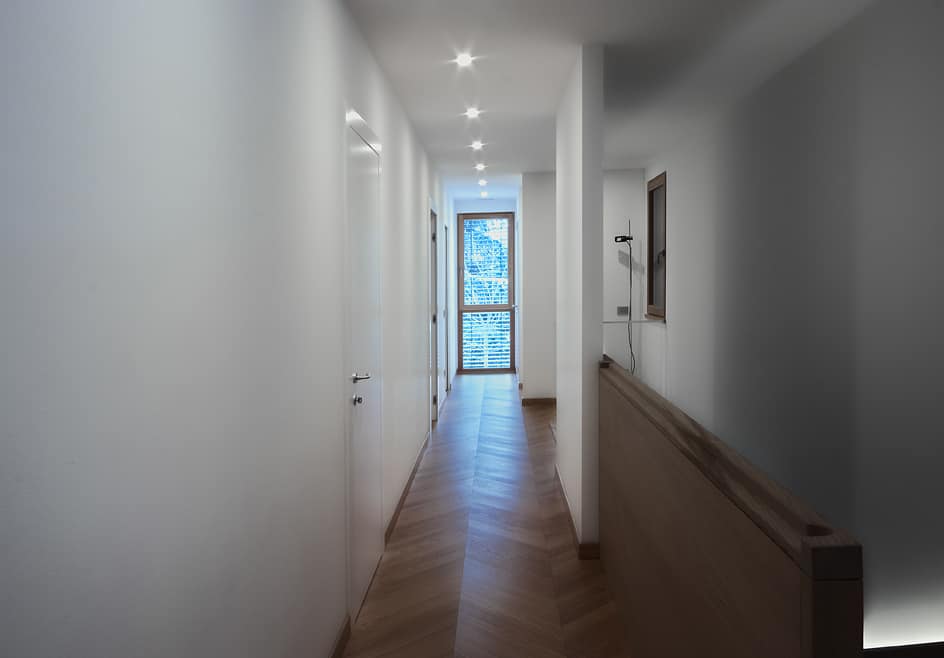
Upstairs the flooring changes from concrete to an oil finished oak while the walls continue the scheme of white. Note that one side of the hall uses a herringbone pattern, while the other stays to a linear layout of the oak boards.
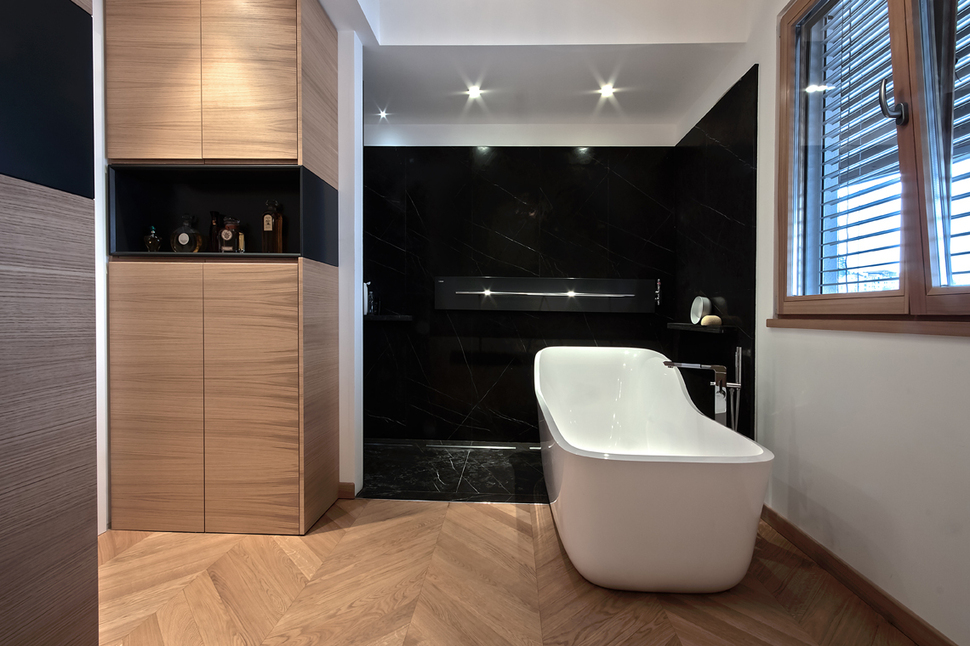
The herringbone pattern to the oak is continued in on the washroom floor and is a soft contrast to the dramatic black marble shower surround just behind the soaker tub. Repeating this contrast is the curvaceous silhouette of the tub next to the linear lines of the floor faucet.
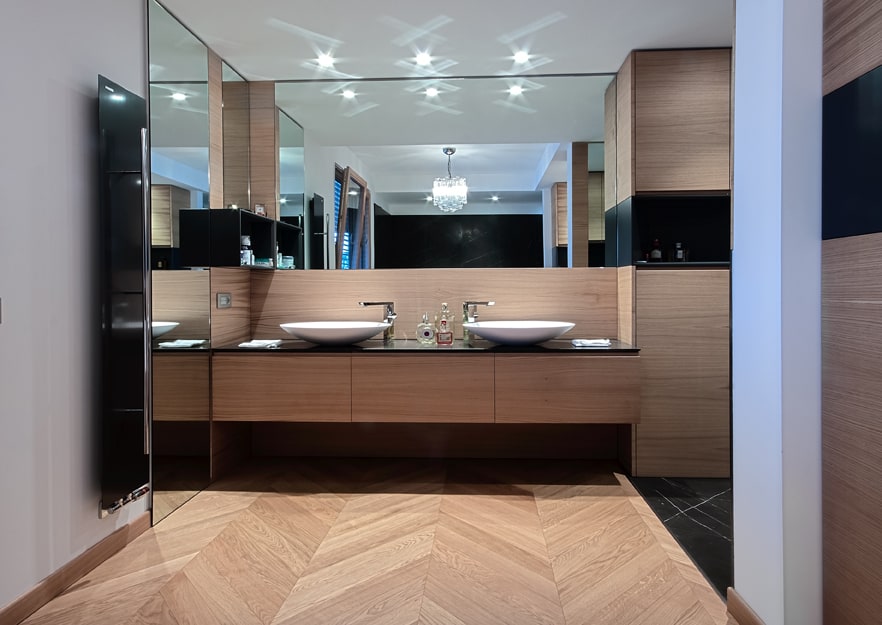
On the other side of the shower is a soft wall of wood and floating cabinetry that comprises the vanity. The counter expanse of mirror reflects a bathroom chandelier for a touch of glitz in an otherwise minimalist decor.
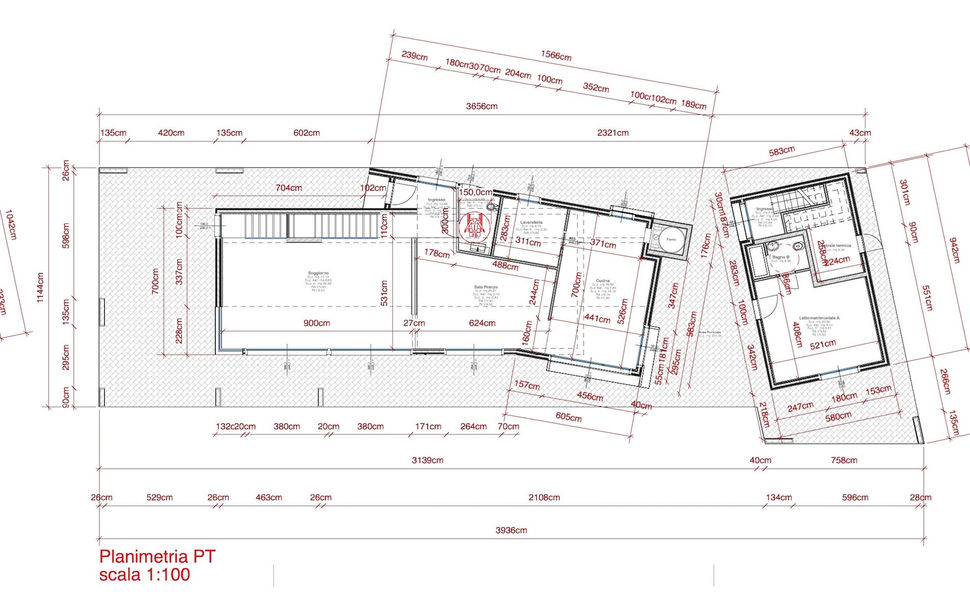
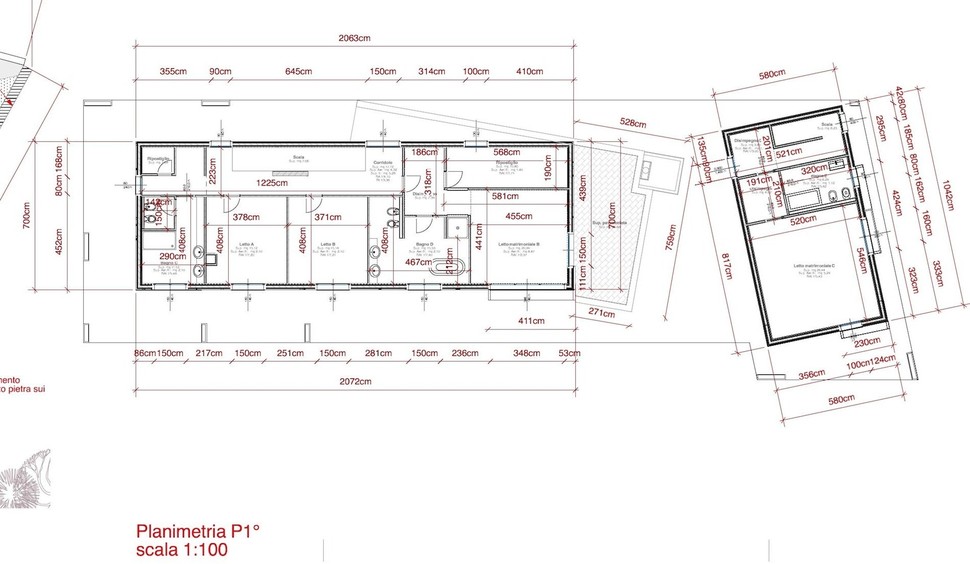
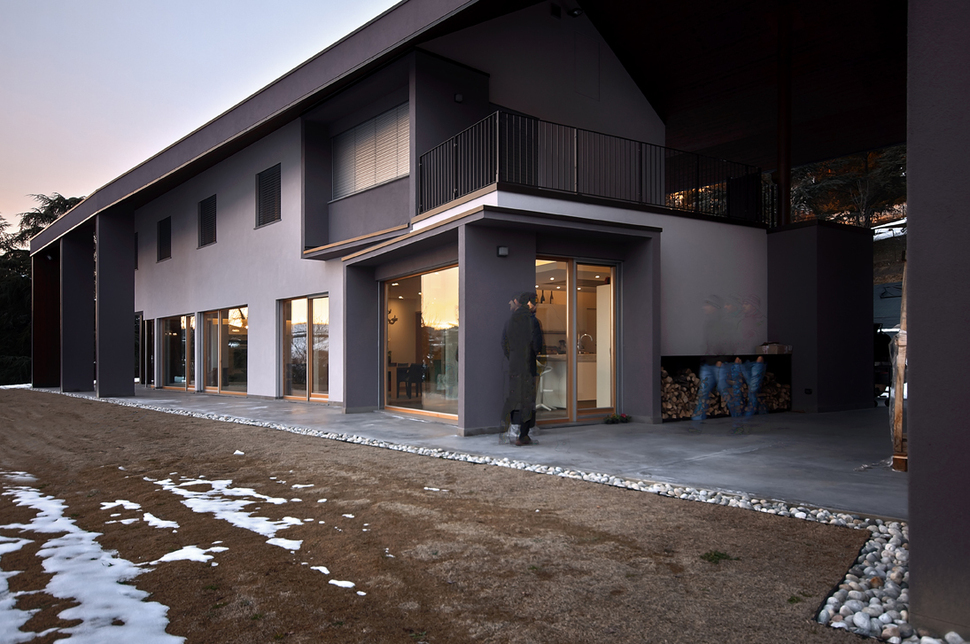
This 350sqm Italian residence is characterized by the use of natural and sustainable materials such as wood frame and composite wood panel walls, natural insulation with woodfibre, natural hemp fibre, etc., and natural lime based plaster. The building has no basement and sits on 32 pilings that support a reinforced concrete base. All these considerations and others mentioned previously allowed the home to achieve an energy class A status.
Diego Bortolato Architetto
Photography by Daniela Bortolato
